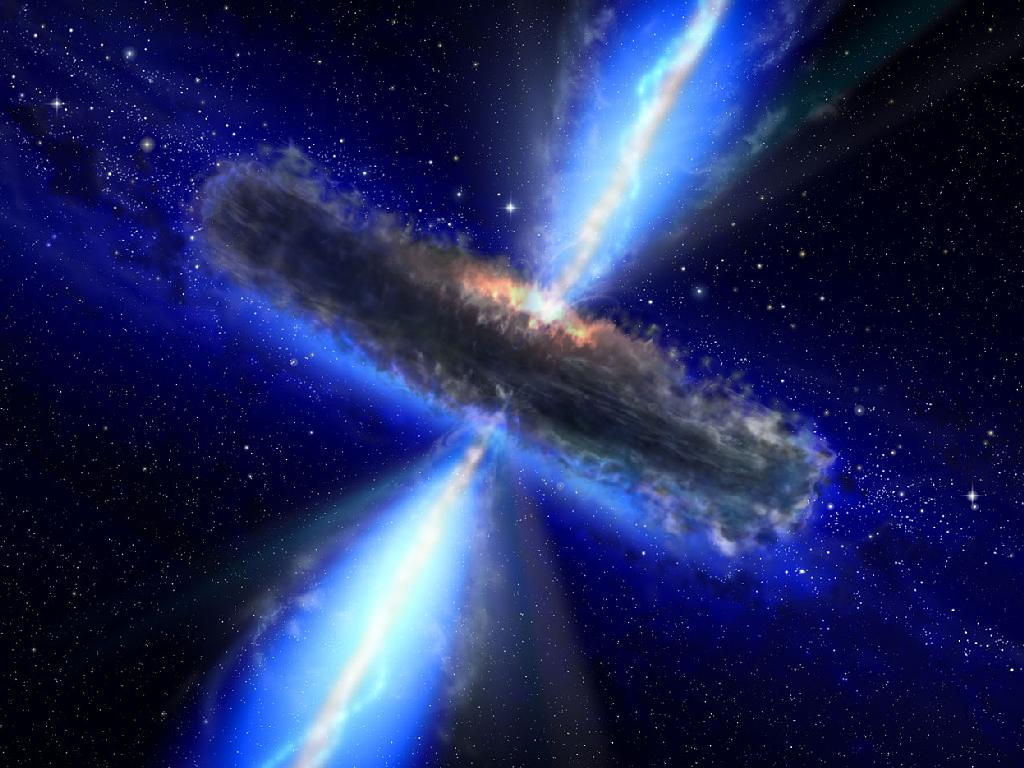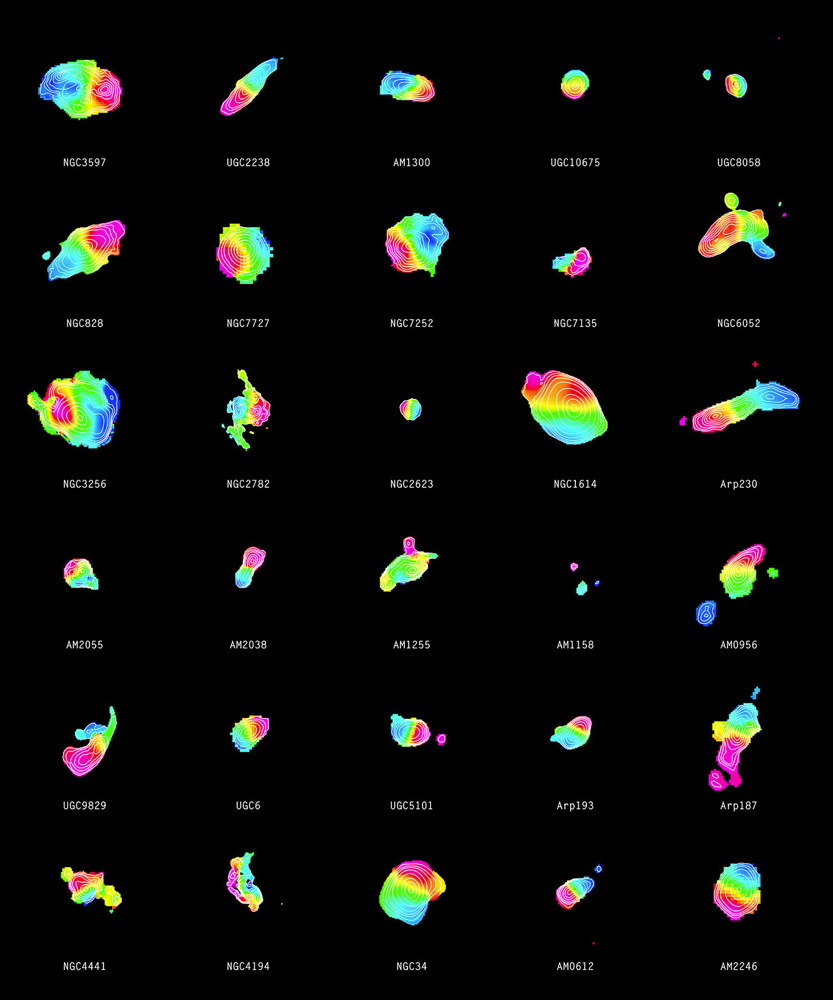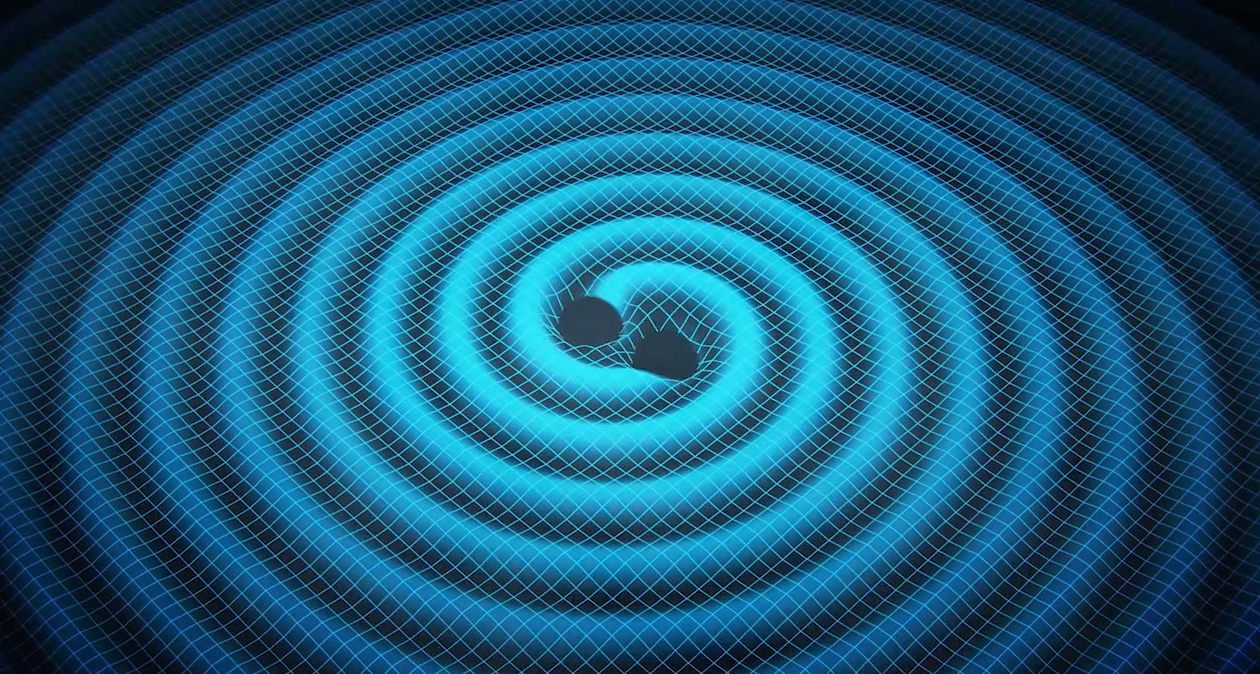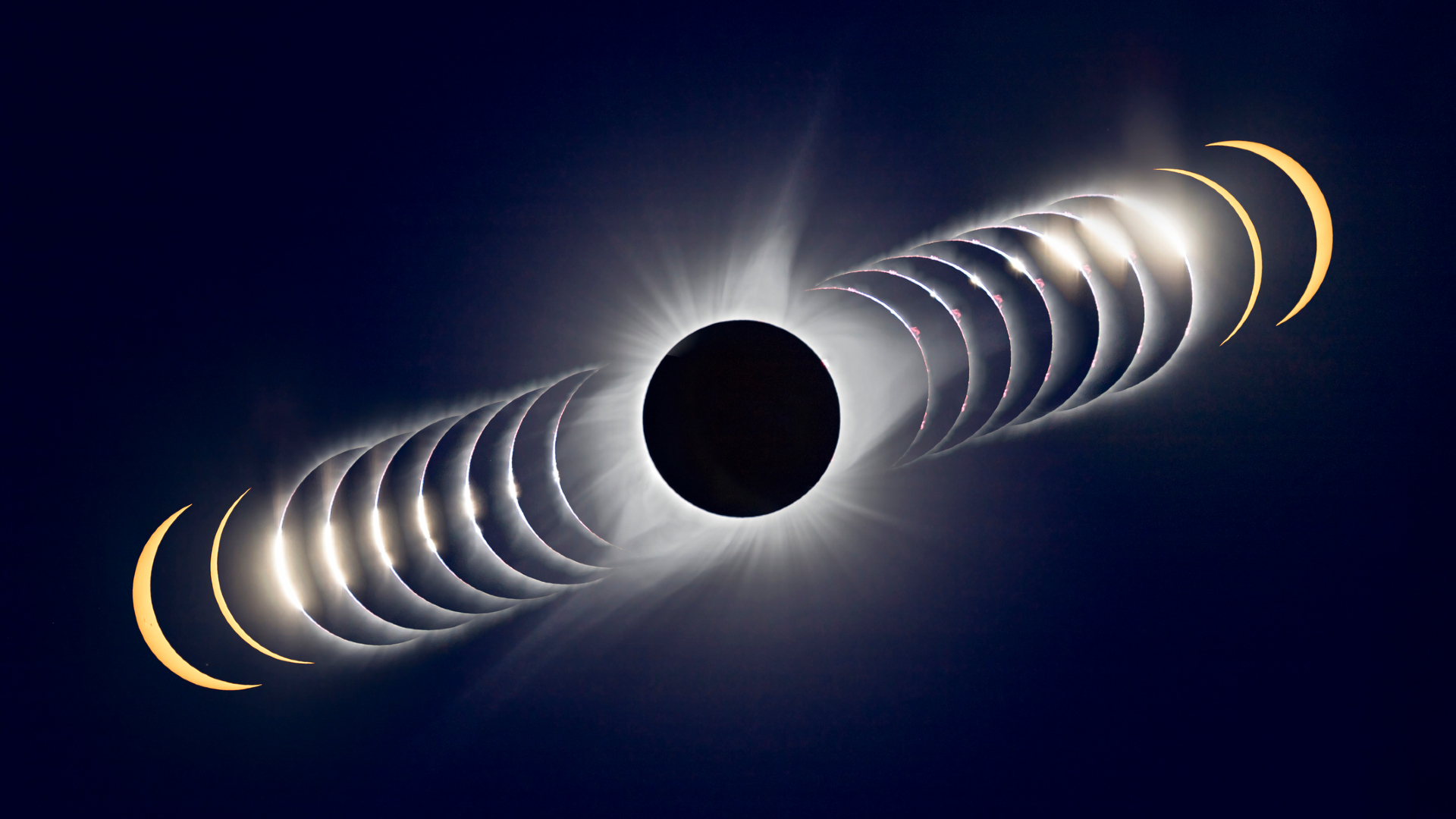Cataclysm Hunters: The Search for Monster Black-Hole Collisions

Julie Comerford has built a career searching for galaxies that contain not one, but two supermassive black holes — light-devouring monsters that have masses millions or billions of times that of the sun. So far, the count is up to 12.
"The mergers of two supermassive black holes is second only to the Big Bang as the most energetic phenomena in the universe," Comerford, an astrophysicist at the University of Colorado, Boulder, told Space.com. Yet that titanic, violent dance — essential to galaxy growth and evolution — has not been spotted very often.
Each galaxy has a supermassive black hole at its core. When two galaxies merge, the two central black holes circle faster and faster, coming closer and closer until they merge into one as well. Once light crosses the threshold of a black hole, it can never escape, but galactic sleuths like Comerford have spent years looking for other kinds of evidence revealing those monster black holes headed for a cataclysmic collision. [The Strangest Black Holes in the Universe]
Relatively small "stellar mass" black holes form when a huge star dies in a supernova explosion and its core collapses. A black hole can grow as more mass falls into it, but nobody can fully explain how the supermassive ones lurking at the cores of galaxies are able to get so enormous — the one at the center of the Milky Way has a mass 4 million times that of the sun, and it's comparatively small. The process of two galaxies merging could explain this extraordinary growth.
"One theory is that maybe a lot of the black hole mass growth actually occurs during galaxy mergers, because that's when all this gas is being slammed together and funneled towards a black hole — so there's a lot of fuel available for the black hole to eat and build up its mass," Comerford said.
Solving the growth mystery promises to reveal insight into how galaxies, and the black holes at their hearts, grow and change over time. Plus, it should help hone scientists' newly proven powers of detecting gravitational waves.
Searching for light
The ultralarge black holes at the centers of galaxies don't let any light slip out, but pairs of structures so massive leave their mark on the environment around them in other ways. For one thing, they're always at the hearts of merging galaxies.
Breaking space news, the latest updates on rocket launches, skywatching events and more!
"The Milky Way just has one central big sphere of stars, so it would not be a good candidate for one of these potential double black holes," Comerford said. "We're looking for things that look different from the usual galaxies that you see images of, like a normal spiral galaxy or elliptical galaxy — that's not what we want. [We want] the ones that look like they're two merging spheres of stars."
That merging process also puts a lot of extra material in the path of each of the black holes, which can gain whirling "accretion disks" of dust around them that glow brightly andemit jets of energy. Supermassive black holes with that kind of ultrabright beacon are called quasars, and they're far from invisible — in fact, they often outshine the galaxies that surround them.
Comerford first started searching for these double-black-hole galaxies when she was in graduate school. Her group first recognized the black holes by the unusual spectrum of light their host galaxies emit, as measured in big survey studies like the Sloan Digital Sky Survey.
Galaxies with a quasar at their center — a supermassive black hole taking in large quantities of material — emit a narrow band of radiation that's very bright. But the galaxies Comerford was looking for were more complex: Instead of a nice, tall peak indicating the intense glow emitted by the quasar, she saw two peaks — one slightly redder and one slightly bluer.
The two peaks showed that there were two significant light sources in the system: one moving toward Earth and one moving away. By following up with an X-ray or radio telescope, or with NASA's Hubble Space Telescope looking in visible light, she could verify that those two light sources were embedded in a merging set of galaxies. [Black Holes' Jets Herald Galaxies' Mergers (Video)]
Comerford's systematic search could find supermassive black holes that are around 3,000 light-years away from each other — that's about 1/8 the distance from Earth's solar system to the center of the galaxy — and that are orbiting one another at about 500,000 mph (800,000 kph). Looking straight at such systems, it might be impossible to distinguish the two quasars from each other because they'd be too close together, so the wavelengths of light emitted provided a crucial first clue.
More recently, because of the increasing amount of Hubble galaxy imagery available, Comerford has started relying on visual images to pinpoint the supermassive black hole pairs. First, she finds quasar activity in telescope data, and then she checks with a Hubble image of the galaxy to see if it looks like it might be two merging galaxies, with two tight cores of stars that might each surround a supermassive black hole. Finally, she follows up with higher-resolution infrared or radio telescopes to try and distinguish whether there are two separate quasars there.
"There may be one [supermassive black hole pair] in every something like a thousand to a million galaxies," Sarah Spolaor, a researcher at the National Radio Astronomy Observatory in New Mexico, told Space.com. "The chance of just finding one by chance is pretty low, but if you have a sky catalog of thousands upon thousands of galaxies, then you're much more likely to see that kind of weird-looking one that you think, 'What is that?' — and it's maybe a binary black hole."
The growing mystery
Researchers know that supermassive black holes are intimately tied to the galaxies surrounding them. There's one at every galaxy's heart, and the galaxy's size is reflected in the size of the black hole. Even early galaxies, born close to the beginning of the universe, show that correlation. Finding black hole mergers can help solve the mystery of how those black holes got so big, so early in the universe's history. Plus, even the existence of quasars at all, which can only form once black holes get massive enough, raises questions.
"Why are we doing this stamp collecting?" Comerford said. "There's scientific questions that we want to answer, and that is one of the big ones: how do black holes get enough gas in the first place to become a quasar?"
Researchers know that black holes at the center of merging galaxies ultimately form into one larger supermassive black hole, but it's unclear whether that's the whole picture.
"Galaxy mergers are definitely an effective way to get supermassive black holes to grow," said Scott Barrows, an astronomer also at the University of Colorado, Boulder. "But how important is this process relative to other processes that could just be happening in a galaxy that's not interacting?" Barrows said. "There's not a good consensus on how this works as of yet," he told Space.com.
Barrows' own research searches for supermassive black hole systems where only one black hole has bloomed into a quasar — an indicator, he said, that the black holes are uneven; one is growing faster than the other and taking in more material kicked up in the merger. That uneven matchup could help scientists understand exactly what role the events play in growing black holes and the galaxies surrounding them. [Gallery: 65 All-Time Great Galaxy Hits]
Besides solving that mystery, a better understanding of the epic systems should reveal more about the overall universe's evolution, researchers say.
"Supermassive black holes are thought to play a huge role in how the universe evolves," Spolaor said. "They are the most massive compact single objects in the universe."
Do the wave
When two black holes finally merge, they set off an intense clap of energy that should be released as gravitational waves — ripples in space-time that are caused by superenergetic events.
Gravitational waves were measured for the first time in February, and were traced back to the merging of two small black holes, each of which contained about 30 times the mass of the sun. Supermassive black hole mergers should give off a much more powerful signal.
"Once you have a population of these close double black holes, you can make predictions about how long they'll take to merge, or what the gravitational wave signatures they produce will be like," Comerford said. "That's the other angle. [On] the one side, we're learning about how black holes grow and build up their mass, and then the other angle is these are the black hole pairs that we know of that are the closest to merging and creating gravitational waves." [Stirred, Not Shaken - How Colliding Black Holes Make Waves (Video)]
Spolaor uses supersensitive radio telescopes to hunt for double black hole systems as part of her research into pulsar timing, a process that measures tiny changes to certain celestial bodies to detect gravitational waves moving through space. Knowing where double black hole systems are, and physical properties about the circling giants, can help her narrow down what types of gravitational wave signals to search for from the systems.
Scientists have already found one invisible interaction with gravitational waves, and one day, gravitational wave measurements will point out many of the universe's wildest interactions. But for now, it's up to researchers to interpret what light makes it over from those powerful, chaotic systems.
"When something like Hubble is observing one of my galaxies, I like to look up where the orbit of Hubble is," Comerford said. "I like to find out when it's passing overhead, where I am. So I go outside, and I look at Hubble while it's looking at one of my galaxies — that's how I commune with it. But then, I have to be patient and wait until at least the next day to see what the data actually looks like."
Email Sarah Lewin at slewin@space.com or follow her @SarahExplains. Follow us @Spacedotcom, Facebook and Google+. Original article on Space.com.

Sarah Lewin started writing for Space.com in June of 2015 as a Staff Writer and became Associate Editor in 2019 . Her work has been featured by Scientific American, IEEE Spectrum, Quanta Magazine, Wired, The Scientist, Science Friday and WGBH's Inside NOVA. Sarah has an MA from NYU's Science, Health and Environmental Reporting Program and an AB in mathematics from Brown University. When not writing, reading or thinking about space, Sarah enjoys musical theatre and mathematical papercraft. She is currently Assistant News Editor at Scientific American. You can follow her on Twitter @SarahExplains.
![Black holes are strange regions where gravity is strong enough to bend light, warp space and distort time. [See how black holes work in this SPACE.com infographic.]](https://cdn.mos.cms.futurecdn.net/8GbuLi8DVtx8HoZeSyndT7.jpg)




